Abstract 9/2014
Table of content
Andrzej Brzeziński, Karolina Jesionkiewicz-Niedzińska – Bicycle as an alternative to car combined trips based on the example of the Warsaw agglomeration
Łukasz Kowalski, Andrzej Miłosz, Barbara Peek – Mapping and analysis of problem’s spots from cyclists’ perspective in Cracow
Sławomir Goliszek – Changes in the availability of collective transport in Lublin as a result of infrastructure investments financed from the EU funds untill 2020
Szymon Wiśniewski – Cohesion of transport network in the Łódź voivodeship in the light of graph analysis
Sebastian Kowerski, Czesław Wolek – Analysis of fast tram’ and metro’ operation parameters
Abstracts
Andrzej Brzeziński, Karolina Jesionkiewicz-Niedzińska
Bicycle as an alternative to car combined trips based on the example of the Warsaw agglomeration
Abstract: The mobility is one of the basic human activities. People use transport system every day travelling to work, for shopping or leisure purposes. Mobility should not be limited, but should be consciously created. With the increase in congestion in inner-city areas, an increase in the number of combined travel is observed, especially within the gglomeration. An example would be the metropolitan area of Warsaw, where in recent years one can observe a significant development of P+R and B+R systems. It was noted that the B+R system is much cheaper than P + R system and, what is more important – it completely eliminates cars from the travel chain. In many cases it is therefore more effective.The article presents research and experience from the operation of the B+R system in Warsaw and agglomeration. It describes intensity of use, its functioning, user preferences and the relationship between the B+R and P+R. Conclusions and recommendations can underlie the basis for decisions on the future development of the Bike and Ride, in the context of developing the Park and Ride system. Recommendations can be used for analysis and planning of urban and regional transport systems.
Key words: system Bike & Ride, B+R, P+R, interchange nodes, modal split, travel behaviors.
Łukasz Kowalski, Andrzej Miłosz, Barbara Peek
Mapping and analysis of problem’s spots from cyclists’ perspective in Cracow
Abstract: Management and development of bicycle network is a challenge for big Polish cities. Sufficient data about cyclists, their daily trips and problems is lacking. The authors used internet survey to map places perceived by cyclists as problematic. During 2 months 532 persons have responded, mapping 1 235 spots and 1 140 sections requiring repairing and improvement in reference to bicycle traffic. This dataset was completed with 1 174 respondents’ comments and 1 085 investment suggestions which facilitate interpretation of messages. Generally the most important problems were: for spots – dangerous intersection – 32%, for sections – places where vehicles drive too close bikers – 25% and bumpy surface – 22%. Problems were concentrated at the busiest city’s intersections and roads where cyclists were conflicted usually with car drivers – organization of bicycle traffic was defective. It is difficult to analyze such a big dataset at the level of a city – each spot has it’s unique characteristic. In order to find places of the highest concentration of necessary improvements the authors used point and line density maps. Later they analyzed in detail 6 hotspots, using information provided by respondents. Applied methodology of mapping problems in bicycle network by its users, proved to be good and effective. In a very short period we gathered big, reliable set of data, which was easy to interpret. Studying of the urban infrastructure based on the users participation will improve managing of cities in the future, not only with reference to the bicycle’s issues.
Keywords: bicycle traffic, survey, cycle policy, bicycle network, Volunteered Geographic Information, internet application
Sławomir Goliszek
Changes in the availability of collective transport in Lublin as a result of infrastructure investments financed from the EU funds untill 2020
Abstract: In this article the issue of improving urban transport functioning / accessibility as a result of infrastructure investments in two periods is considered. Analysis of investments of financial perspectives 2007-2013 and 2013-2020 are to answer the question of how funds from current will improve the access to public transport in Lublin. In the analysis, it is stated that infrastructure investments of the EU perspectives 2007-2013 and 2014-2020 will contribute with change travel times by public transport.Infrastructure investments, which are based on the analysis of changes in the accessibility of public transport in Lublin were included in two expertises focused on cities in Eastern Poland.The main objective of the study is to prove the impact of structural funds of the EU perspective for 2014-2020, for improvement of the functioning and accessiblity of public transport in Lublin. Analysis of improving the accessibility of public transport in a one-dimensional surface changes presents isochrones, arrival time, number of people and a population density located in the isochrones in 2013 and 2020.
Keywords: improvement of the accessibility of collective public transport, isochrones, public urban transport.
Szymon Wiśniewski
Cohesion of transport network in the Łódź voivodeship in the light of graph analysis
Abstract: This article presents an analysis of the coherence of road, rail and tram network in the Łódź region. It describes local and regional transport relations between cities located in the area serving as a node of international importance, especially in a period when international network of roads and railway lines is operating only fragmentarily. Against the background of national and European system of transport links specified measure of consistency in terms of the relationship between the cities – hubs of the region are determined. In the study graph approach was used, assuming that the vertices of the graph are the cities of the region and the edges connecting different cities linear elements of the road, rail and tram network. Based on data provided by the institutions and companies managing transport infrastructure and organization and providing transport services, transport system of the Łódź voivodeship has been presented and then – thanks suitable generalization a graph allowing the study of geographical coherence has been drawn on this base. Furthermore a possibility of raising the coherence of the operating structures in relation to the investment policies conducted by the infrastructure managers has been indicated.
Key words: transport network, TEN-T, graph, Łódź region, Łódź voivodeship
Sebastian Kowerski, Czesław Wolek
Analysis of fast tram’ and metro’ operation parameters
Abstract: The paper presents an analysis of the operating parameters of fast tram and metro on the example of the Poznan Fast Tram (PST) and the underground in Warsaw. The tests were performed on sections of a length of about 5900 meters in the case of Poznan, and 5600 meters of the case of Warsaw. In the capital of Wielkopolska studies have been carried out on the section: Osiedle Sobieskiego – Most Teatralny. Bus station “Most Teatralny” (Theatre Bridge) serves as a temporary stop during the reconstruction works at the Rondo Kaponiera reconstruction. In Warsaw, subway’ section from the Marymont station to the Center station has been tested. The article is enriched by diagrams and photographs illustrating discussed means of transport. Tests were carried out on working days from April till June 2014. During survey time, distance between stations and time of passenger transfers have been measured. Collected data have been used in the detailed analysis of the four operational parameters. The proportion of passenger’s transfer time and time of journey (ride) of each of the transport mean have been presented in clear diagrams. The drawings show changes in technical and communication speed and their schedule for following analyzed trams and subway trains. Drawings present also distribution of passenger transfer time (stop on the platform). Summary containing conclusions of the research is closing the article.
Key words: public transport, underground, fast tram

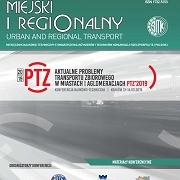
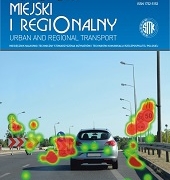
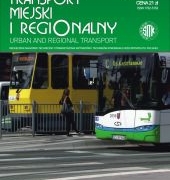 SITK RP
SITK RP 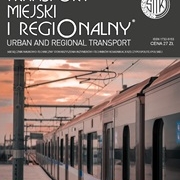 SITK
SITK 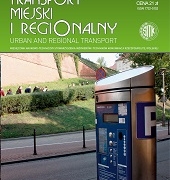
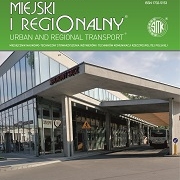 SITK
SITK 
 SITK RP
SITK RP SITK RP
SITK RP